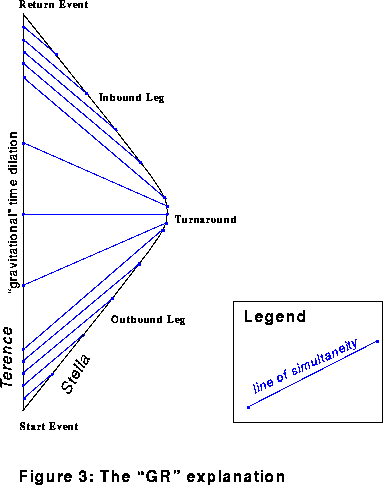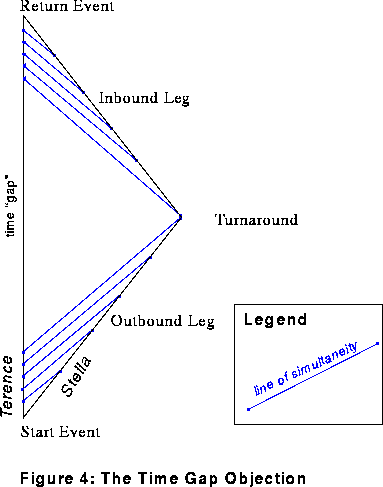
An old lawyer joke:
"Your Honor, I will show first, that my client never borrowed the Ming vase from the plaintiff; second, that he returned the vase in perfect condition; and third, that the crack was already present when he borrowed it."Or to quote Shakespeare: "Methinks the lady doth protest too much."
Why so many different explanations? Are the relativists just trying to bamboozle their opponents? To prevail, a defense attorney just has to stir up doubt about the plaintiff's case; she's not required to give her own theory of what happened. But a physical theory should tell a single coherent story.
Relativity here pays the price of permissiveness. It says to us, "Pick whichever frame you like to describe your results, or use spacetime diagrams and don't choose a reference frame at all. They're all equivalent, I don't mind." No wonder that one explanation ends up looking like three or four.
Most physicists feel that the Spacetime Diagram Explanation is the most fundamental. It does amount to a sort of "Universal Interlingua", enabling one to see how superficially different explanations are really at heart the same.
Figure 1 is the basic spacetime diagram for our hero and heroine. By adding lines one way or another, we will get all the various explanations. (Oh yes: choose units so that c=1 throughout. So light rays graph as 45 degree diagonal lines in all our diagrams.)


The time dilation factor in the diagram is two: Terence ages twice as much as Stella. (Notice that Stella has time to send off a mere 16 pulses, while Terence fires off 32.) The emissions are spaced evenly from the viewpoint of the respective senders; not so the receptions, which are redshifted or blueshifted according to the relative motion of sender and receiver. All pulses are properly accounted for; check out the Doppler Shift Explanation for full details.
Figure 3, the diagram for the "GR" Explanation, adds lines of simultaneity (in blue) instead of light pulses.

Modify Figure 3 slightly, and we have a portrayal of the Time Gap Objection (Figure 4).

These are just a few of the ways we can decorate our simple diagram with extra lines. In the laissez-faire spirit of General Relativity, we could cover the diagram with almost any network of grid lines, and base a description on the resulting coordinate system. (I hasten to add that there are some pitfalls for the unwary: see Section 6.3 of Misner, Thorne, and Wheeler for the fine points.)
One territory, many charts.